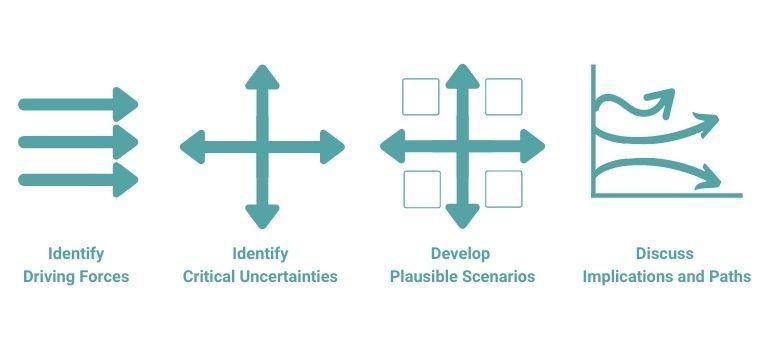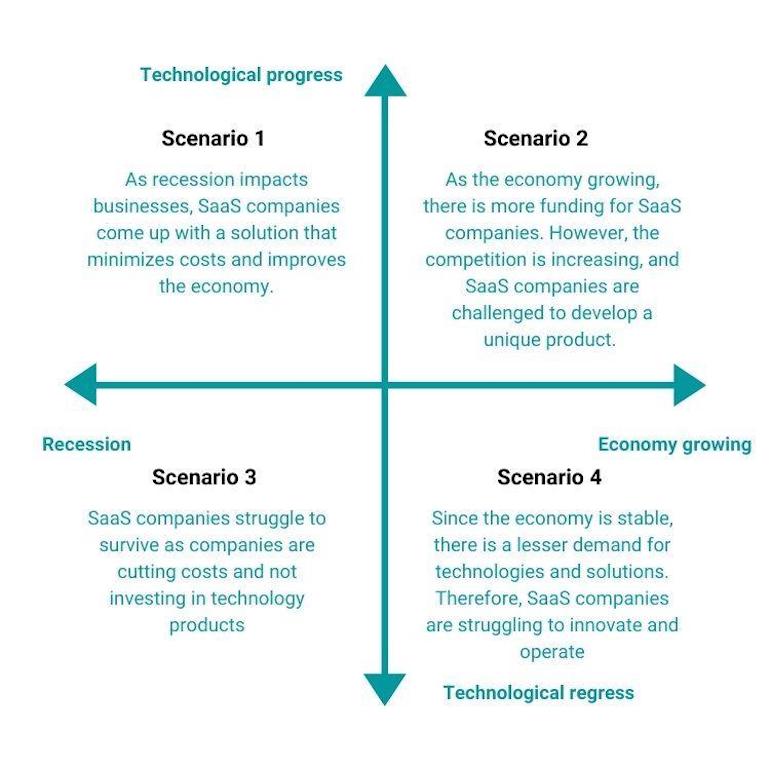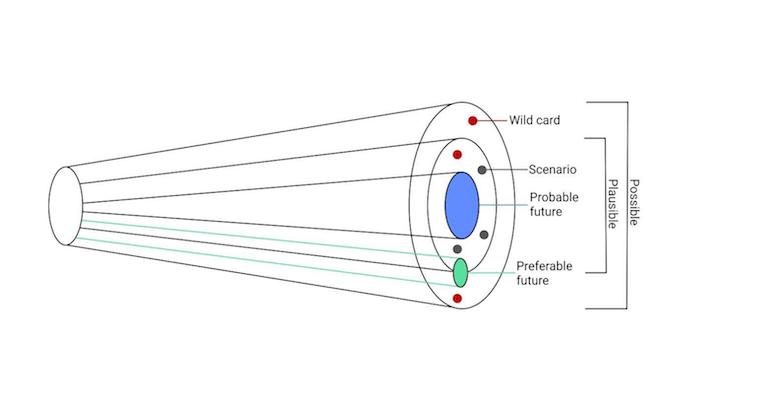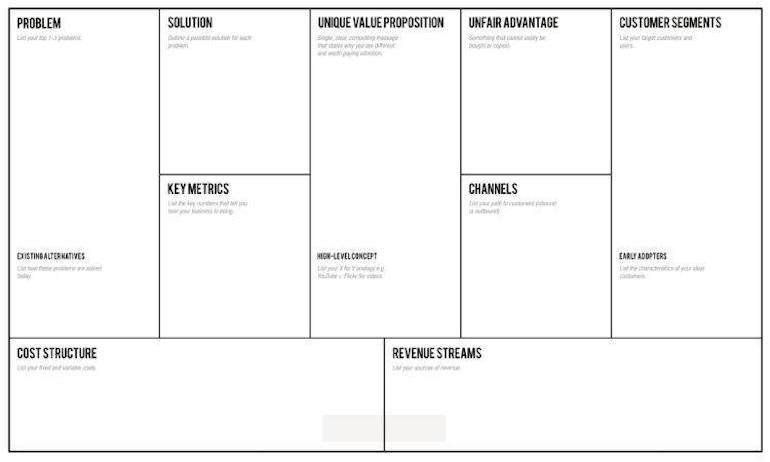Have you ever wondered what the future might hold or how the world might change in the upcoming decades? Indeed, most of us do, and it is quite typical for human beings to fantasize about the future. There are numerous movies about flying cars, colonizing Mars, and time travel. In reality, we can’t predict the future, but we can always make assumptions about it.
When it comes to app development, we call this future scenario planning, where we understand current trends and use them to predict potential outcomes.
The future might be uncertain, and with rapidly changing trends, it is becoming harder to predict what apps will be disruptive and innovative in a few years’ time. The main goal of future scenario planning is to assume what types of apps will fill in gaps and provide a solution to an occurring problem.
Over the past decades, most development companies have implemented standardized product and app development processes, which involves disciplined timelines, strict design reviews, “gates” to decision making, and cross-functional development teams. These processes of app development are efficient; however, they are not maximizing value creation.
In this article, we will dive into the role of future scenario planning in developing new ideas to create innovative apps that meet market needs.
What is future scenario planning?
"Future scenario planning is making predictions on what the future will be and how the business environment might change in light of that future."
In simple words, future scenario planning is making predictions on what the future will be and how the business environment might change in light of that future. With future scenario planning, it is possible to identify a set of uncertainties and different “realities” of what can possibly happen in the future, and how alternative factors can impact businesses.
How can future scenario planning help in app development?
When it comes to app development specifically, future scenario planning can help in a variety of ways. Mainly:
- Future scenario planning provides new app or solution ideas if there is a change or an opportunity in the market
- It helps educate decision makers about the different scenarios that may impact a business in the future, and helps to prepare for those change
- It helps better prepare the team for changes in course
Widening perspectives
Future scenarios help developers look at the broader picture, think “out of the box,” and look for opportunities outside of their application’s current offering. Innovative ideas require a solid understanding of future trends in the market and technological environment.
Exploring the future with scenarios

The future scenario planning process follows four steps to develop four possible future scenarios and find the ultimate solution. The aim is to establish four different scenarios that are most likely to occur after defining the driving forces and critical uncertainties for the months or even years to come. The best way to address these four steps is through brainstorming, where a whole team can work together to identify influencing factors.
Below, we look at the four steps to be followed in identifying future scenarios.
You might also like: How to Use a Mind Map in Product Design.
1. Identify driving forces
The first important step of future scenario planning is to identify driving forces. To better understand what driving forces are, you should discuss within your team what are the big shifts in society, economics, politics, legal, technology, and environment that can impact your business. This is called a PESTLE analysis.
Once you’ve identified these factors, analyze with your team how these shifts can impact your business. These shifts may include new political legislations, environmental disasters, increases in commodity prices, and others. For instance, the Huawei-US ban has forced the company to develop new apps and an alternative OS, as Google and Android applications were no longer accessible for new smartphones. This is an outcome that nobody anticipated, but which may have been caught by Huawei in their own future scenario planning.
2. Identify critical uncertainties
Once your team has made a list of potential driving forces, pick two uncertainties that are the most relevant to your business and industry. For instance, some warning signs for SaaS companies are economics and technology, such as a recession amid the pandemic, and rapid technological changes. Your team can start building up around these two uncertainties to define plausible scenarios. For example, for Shopify app developers there are always uncertainties in terms of new legislation and changes in guidelines.
2. Develop plausible scenarios

The aim is now to shape a sort of matrix, with the axises being your two essential uncertainties. You can now draw four potential outcomes for the future based on what direction each of the uncertainty will take. Using our SaaS example above of technology and economics, we can then place each factor in a negative or positive direction on the matrix. For instance, as shown in an illustration above, four different scenarios can occur depending on the positive or negative outcomes of each uncertainty.
"The cone of plausibility is intended to reflect the link between the present moment in time and the probability of our expectations of possible events in a graphical manner."
Alternatively, to better understand future scenarios that might occur, your team can use the cone of plausible futures. The cone of plausibility is intended to reflect the link between the present moment in time and the probability of our expectations of possible events in a graphical manner. For app developers planning future scenarios, it offers a valuable visual heuristic—though, as the illustration demonstrates, the more we attempt to prepare for the future, the higher the number of potential occurrences.

You should aim to create two or three contrasting scenarios for future scenario narratives.
Additionally, consider including a "wild card" scenario into your planning. Wild cards are surprising scenarios that offer different perspectives on your business, in contrast to plausible ones. The main focus is to widen your perspective and consider wild cards that might impact you in the coming years.
4. Discuss implications and paths
Once you have four future scenarios, it is time to discuss as a team which scenarios are more likely to occur, depending on the current trends. It is important not to focus on only one future scenario, but brainstorm ideas and solutions for each of them. You can achieve this by doing a series of workshops and engaging with your team members to propose an app development strategy. It is essential to understand what obstacles might occur depending on the scenario, and prepare the whole team to adapt to emerging changes.
For instance, in the case of recession amid the pandemic and technological growth, many SaaS companies are pushed to innovate applications that can help improve the economy and minimize costs. In this case, there is an opportunity for a new app idea, as there is a market need.
Alternatively, if the world managed to combat the pandemic before the recession happened, and the economy stabilized, tech companies might receive a lot of funding to encourage innovation. In such a scenario, there will be a larger competition, stimulating SaaS companies to start innovating and producing unique and competitive applications to appeal to the demanding market.
You might also like: How to Create an Efficient Product Strategy.
Incorporating future scenarios into your planning
Once the future scenarios have been drafted, there are other factors to remember. First, you and your team should address these questions about each potential scenario:
- What is the problem?
- What is my proposed solution?
- Who are my target customers? Who will be an early adopter?
- What are the key metrics?
- What is the unique value proposition of the business idea?
- What is the cost structure and revenue streams?
What channels should be used to promote the application?

One way of addressing all these questions is to fill out Lean Canvas. The Lean Canvas solves the problem of writing a long business plan which is rarely updated, and almost never read. By incorporating your future scenarios in this business plan, your team will be able to come up with solutions to problems before they even occur.
You can also consider these factors—and their corresponding solutions—when building your future apps, starting with the prototyping stage and through development.
Planning for the future
Future scenario planning might not be an easy process and requires a lot of analysis and brainstorming, but it does help companies build better app development strategies. Your company can avoid any unexpected scenarios and prepare better for change by implementing future scenario planning into your app development strategy. Additionally, scenario planning is a great team-building exercise, where insight from every team member is beneficial. We hope this article gave you a solid introduction to future scenario planning to develop new solutions to ever-evolving needs.









